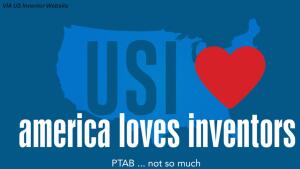by Dennis Crouch
In US Inventor, Inc. v. United States Patent and Trademark Office, No. 2024-1396 (Fed. Cir. Oct. 3, 2025), a group of inventor advocacy organizations petitioned the USPTO for rulemaking that would allow small entity patent owners to opt out of inter partes review and post-grant review proceedings. The USPTO denied their petition and the orgs sued, led by US Inventor. Their lawsuit was dismissed by the district court and the appellate panel has affirmed - holding that the organizations lacked Article III standing because the alleged injury to their members was too speculative, requiring a chain of contingent events largely dependent on the independent actions of third parties.
US Inventor and National Small Business United had filed a rulemaking petition in August 2020 proposing amendments to 37 C.F.R. sections 42.108 and 42.208 that would prohibit institution of IPR or PGR proceedings if the patent owner objected and met certain criteria, including being a small or micro entity who was the original patent applicant and had actually reduced the challenged claims to practice. The USPTO denied the petition in October 2021, explaining that the issues raised overlapped with those in a separate request for comments and that the petition's suggestions would be considered in any future rulemaking. When the organizations challenged this denial in district court under the Administrative Procedure Act, the district court dismissed for lack of standing, and the Federal Circuit affirmed that dismissal applying D.C. Circuit law.
Associational Standing Requirements Organizations can assert "associational standing" to sue on behalf of their members if three requirements are met: (1) at least one member would have standing to sue in their own right; (2) the interests at stake are germane to the organization's purpose; and (3) neither the claim nor the relief requires participation of individual members. Only the first element was contested in this appeal. To establish individual standing, a plaintiff must show injury in fact that is concrete and particularized, actual or imminent (not conjectural or hypothetical), fairly traceable to the defendant's conduct, and likely redressable by a favorable decision.To continue reading, become a Patently-O member. Already a member? Simply log in to access the full post.
